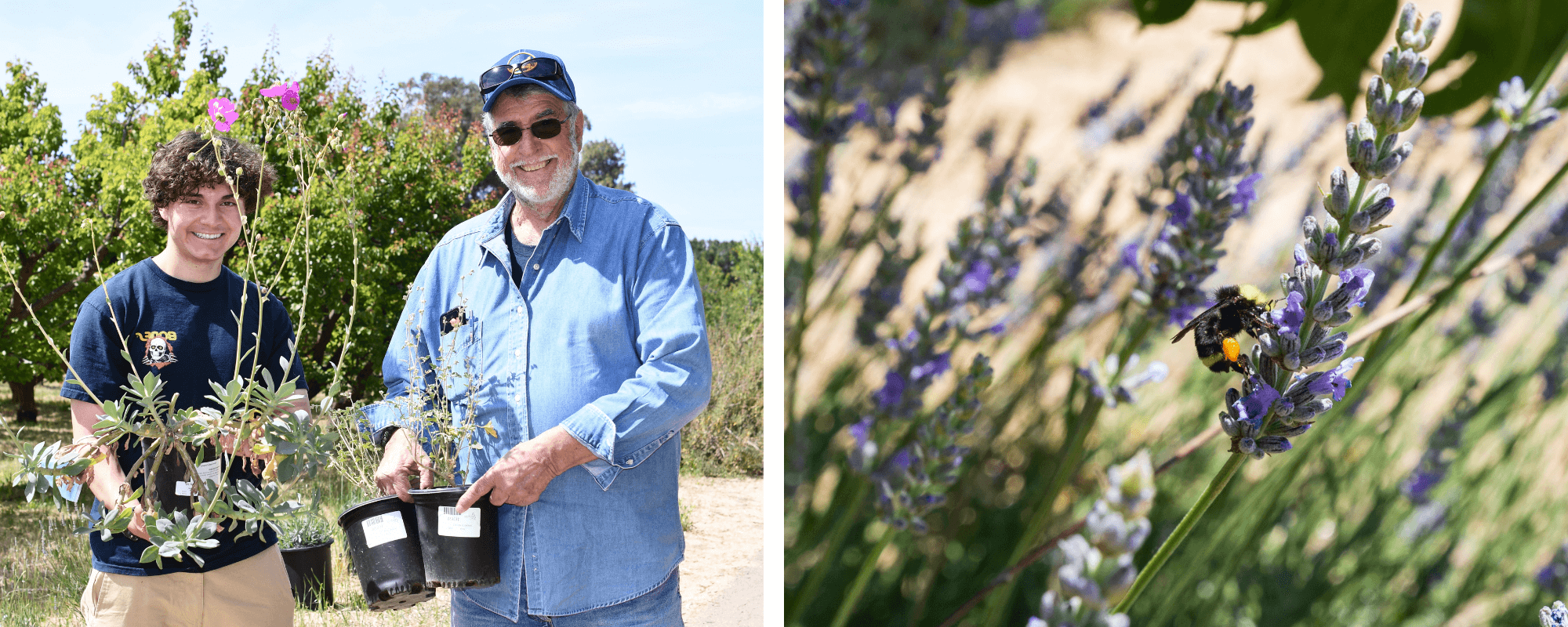When driving through the farm roads, you may spot purple, magenta, and orange splashes at the ends of tree rows or along hedgerows. These splashes of color are not only beautiful, but they are also part of our work to foster habitat for pollinators and other beneficial species. Many of the crops we eat, including all the fruits in our orchard, require a pollinator to reproduce. All told, 80% of the world's flowering plants require pollinators for their survival. Put another way, one out of every three bites of our food was created with the help of bees, and each and every bite of our fruit requires pollination.
Most people think of honeybees as primary pollinators, and their work is vital for food production. And though you'll spot European honey bee hives scattered throughout our orchard, the flowering plants are part of a larger effort to increase biodiversity and draw native bees into our farm's ecosystem.

On a recent warm and sunny day, Gordon Frankie from UC Berkeley's Urban Bee Lab came out to fill in one of our hedgerows. We've been working with Gordon's lab for many years as a partner in their research on native bees' role in agricultural pollination. It's a joy to hear Gordon speak about all of the different plant species we've put in the ground at Frog Hollow. His exuberance is contagious. On his most recent visit, he pointed out gum flower with a yellow bloom that exudes a sticky substance on its flowers. This substance offers flower protection from herbivores who might find it tasty. Whereas the plants he brought out to fill in our hedgerow called rock purslane or Calandrinia spectabilis have a beautiful magenta flower, which he says the bees go crazy for. This plant and most others in our orchard attract bees that are generalists or those that will also visit crop flowers. The Urban Bee Lab knows what the bee flower relationship is with every plant they select for the orchard, so they can predict right down to the species level which bees will be coming to visit those plants.
There are 1,600 different species of native bees in California, each with its own specific biology and ecology. Gordon estimates there are about 70 species of native bees in our Brentwood agricultural region. After years of research and observation of bee species within agricultural areas, the Bee Lab selects plant species to provide year-round sustenance in tune with particular bee species' in a given region. The plantings are selected to provide both nectar and pollen to the bees when they need it. The pollen enables bees to feed their young and encourages bees to create nests within the farm ecosystem. The nectar provides the protein and energy the bees need to thrive. Native bees build their nests in the cavities of trees and in the ground. Hence, an environment like ours, free of synthetic herbicides and pesticides, is another critical component of fostering native bee populations.
We are losing bees and other beneficial insects globally due to habitat loss, environmental contaminants, and disease. Thanks to Gordon and his students' work, you wouldn't know that when walking through our orchard. It's easy to spot bees on any day, even when the trees have finished their bloom. Gordon and his students work with farms throughout California and beyond to bring knowledge and capacity to farmers to create healthy farm ecosystems that will support the diversity of life we need as a planet for survival.
But Gordon wants us all to know the work isn't on farms alone! If you have a sidewalk median, a yard, or even a pot, you too can provide sustenance to help support the survival of pollinators and other beneficial insects. Visit the Urban Bee Labs website helpabee.org to learn more about some of their suggested plants for your area.

